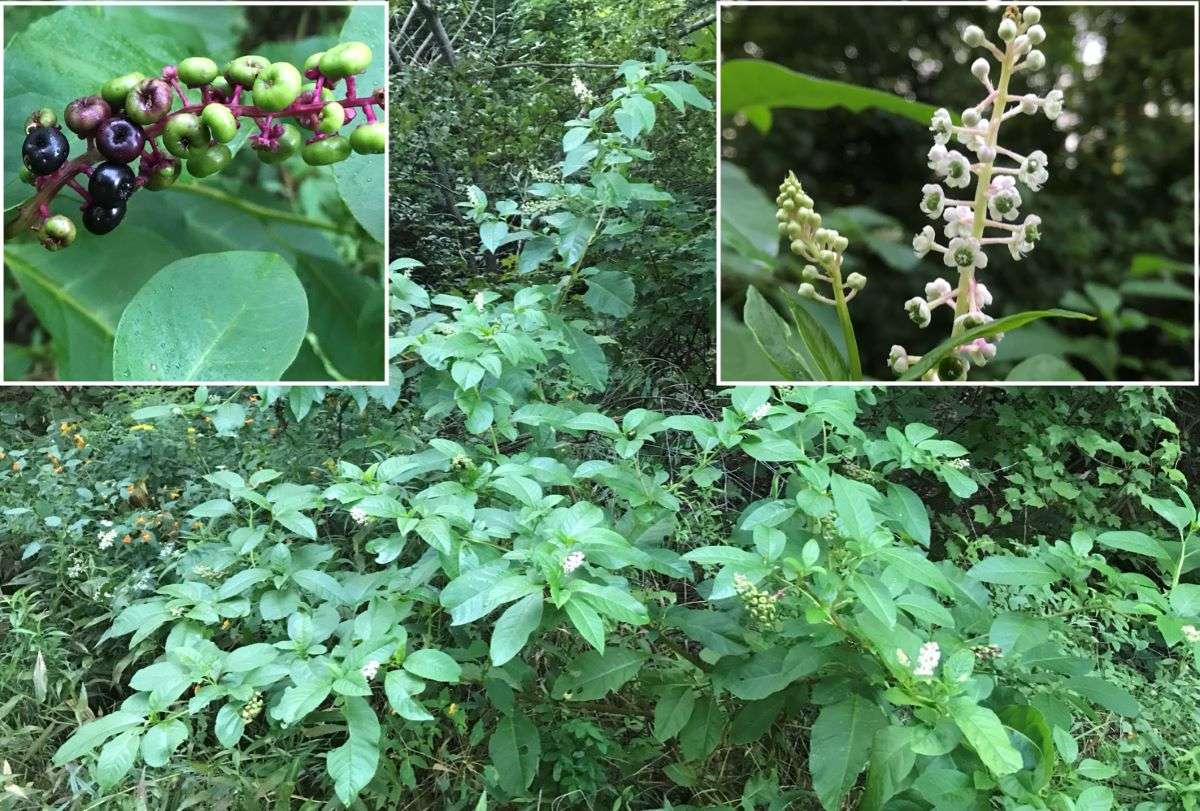Out in the Woods
- September 20th 2024
- Out in the Woods

Pokeweed: Look But Don’t Touch, or Eat Raw
By Kevin McKeon, Maine Master Naturalist
Properly prepared, American pokeweed can be used in pies, salves, dye and ink. It was even sold in food stores until the Allen Canning Co. of Siloam Springs, Arkansas, closed about 10 years ago. But it’s important to remember that this common weed must be prepared properly. Otherwise, it can be deadly.
American pokeweed is found at forest edges, under power lines, and in fencerows, pastures, old fields, forest openings and other areas where birds roost. It is found in all but a few Midwestern states and in Ontario, Quebec, and New Brunswick in Canada. In winter in our area, this perennial herb dies back to the ground, sprouting in the spring from a large, pulpy root. Regional names for the plant include poke, poke sallet, poke salad and pokeberry.
Pokeweed berries are a good food source for songbirds such as the catbird, robin, mockingbird, cardinal, brown thrasher, mourning dove and cedar waxwing, and are a favored food of migrating songbirds. Raccoon, bear, opossum, red and gray fox, and the white-footed mouse also seem to be tolerant of its toxicity.
Pokeweed berries have been used for baking pies, and its leaves reportedly taste like spinach, and the stems are similar to asparagus. Dye and ink are made from these berries; thus it is sometimes called inkberry. Native Americans made a tea from the berries and used it for treating arthritis, rheumatism, and dysentery. Ointments from the roots were used for treating eczema, fevers, fungal infections, ringworms, scabies, sprains, and swellings. No scientifically acceptable evidence has yet surfaced regarding pokeweed’s medicinal value, but testing continues.
Humans and other creatures have been poisoned, sometimes fatally, by eating improperly prepared pokeweed. Research has also shown that common pokeweed can cause mutations (possibly leading to cancer) and birth defects in humans. Since the juice of pokeweed can be absorbed through the skin, contact of plant parts with bare skin should be avoided. North Carolina State Extension has information on both its processing for edibility, and toxicity level.
Some of my fellow baby boomers will remember a popular radio tune, “Polk Salad Annie”, (with a nice bass line and a way too short wah-wah tease, which we all loved — headphones on, volume up!) a top ten 1968 song written and performed by Tony Joe White — later recorded by Elvis Presley. The tune describes the lifestyle of a poor rural Southern girl. The lyrics reference “poke sallet,” a cooked greens dish made from commonly foraged-in-the-wild (thus free) pokeweed. Sallet is an old English word that means cooked greens. This was mis-labeled in the song as “salad,” so some folks ate pokeweed in a salad, uncooked, resulting in many cases of poisoning. But the bushy plant is well worth the stop to ponder — and not touch! — its petal-less flowers, dark purple berries, and its connection with Tony Joe White’s “Polk Salad Annie”!
Song by Tony Joe White: https://www.youtube.com/watch?v=Z-MD8SPW6Eo
Edibility and Poisonous level: https://plants.ces.ncsu.edu/plants/phytolacca-americana-var-rigida/






